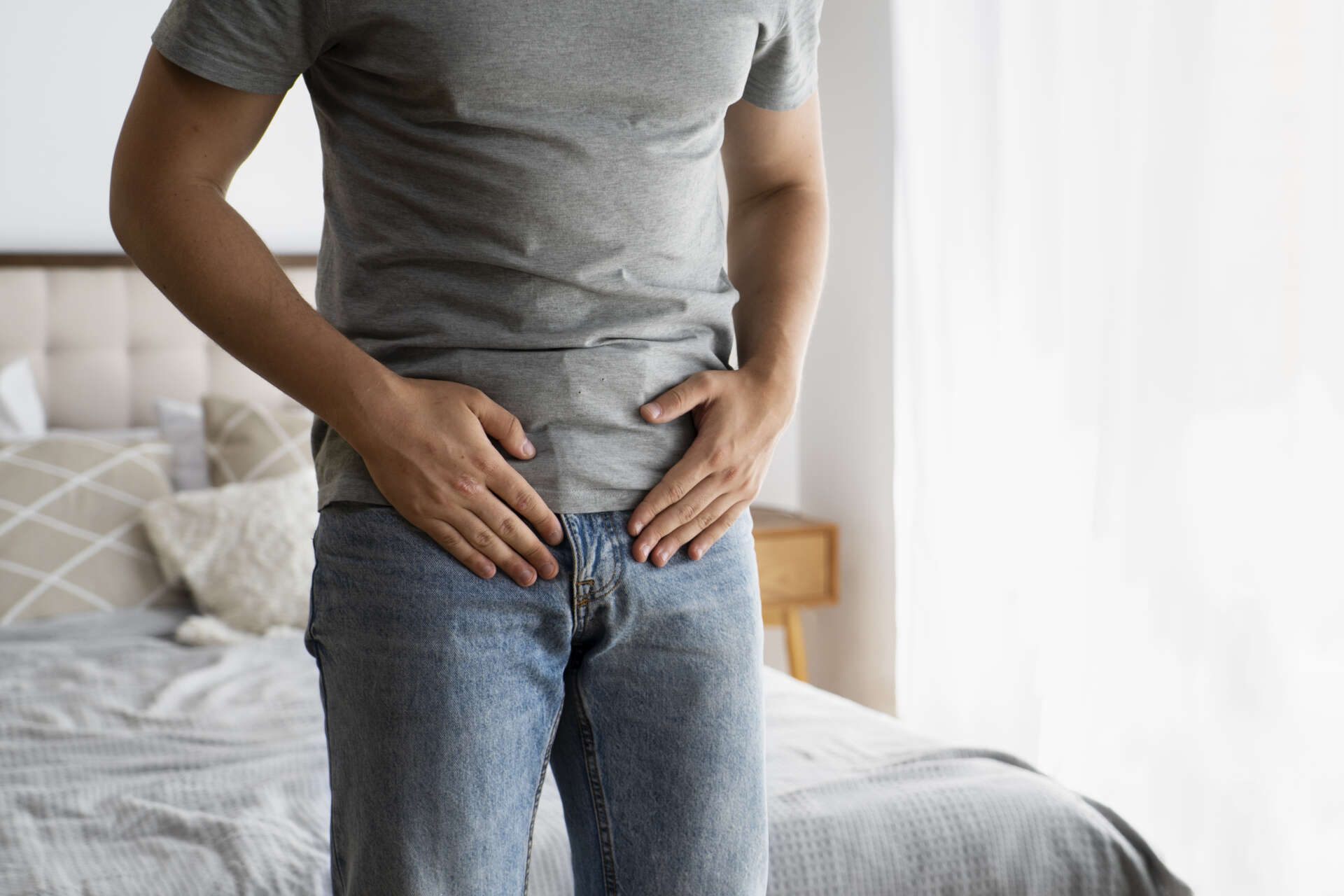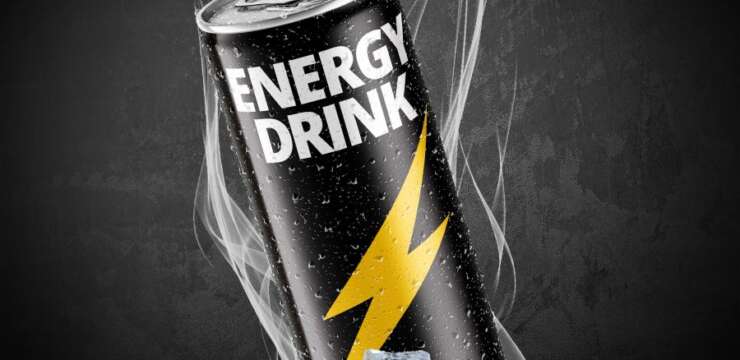Before we get into male UTI, let’s break down what a Urinary Tract Infection (UTI) is. A urinary tract infection is any infection that affects part of your urinary system, also known as your urinary tract. Think of your urinary tract like a series of pipes. A UTI is when bad bacteria get into those pipes and cause problems.
What is Male UTI?
While urinary tract infections are more common in women, men are not immune, especially as they age. Think of the male urinary tract like a security system that usually keeps bacteria at bay, but certain changes—like an enlarged prostate—can weaken that defense.
As men age, their prostate gland grows and while this is usually harmless, it can block the flow of urine. When the bladder doesn’t empty properly, bacteria can start to grow. This is why older men have an increased risk of getting urinary tract infections.
Where can a Male UTI occur?
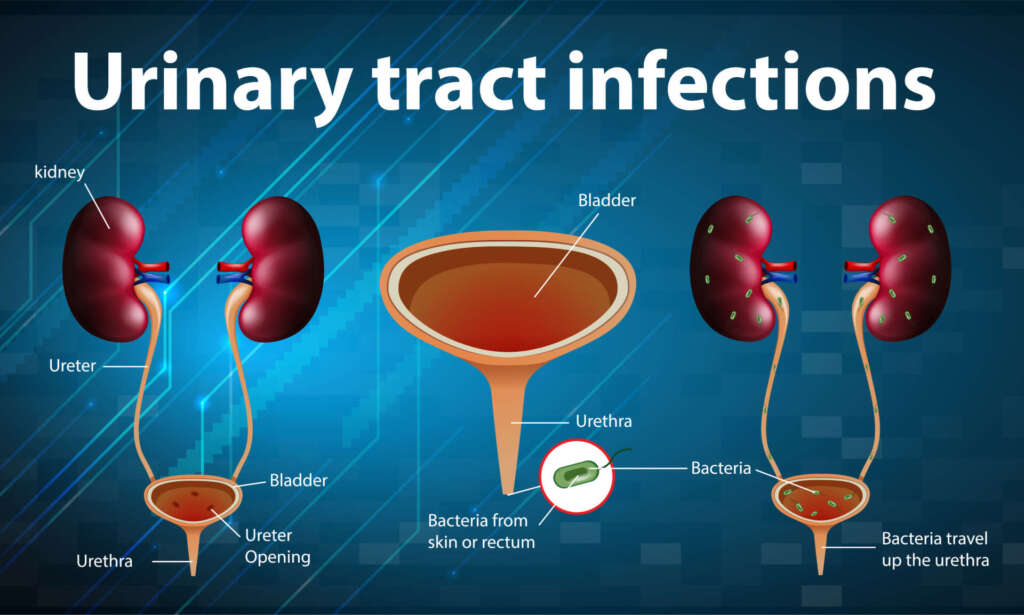
A UTI can happen at different points along the “pipework” of your urinary tract, and depending on where the urinary tract infection is, the names change:
- Bladder (Cystitis): When bacteria settle in the bladder, it causes irritation and infection.
- Kidneys (Pyelonephritis): If the infection travels up and affects one or both kidneys, it’s more serious.
- Ureters: These tubes carry urine from your kidneys to your bladder. While rare, they can also get infected.
- Urethra (Urethritis): An infection of the small tube that drains urine from the bladder out of the body.
Symptoms of Male UTI
A UTI can feel like your urinary system is under attack. The symptoms may include:
- Burning sensation or pain when you pee
- Frequent urination / overactive bladder
- Frequent urges to pee, with not much coming out
- Feeling like you need to pee urgently
- Cloudy, dark or bloody urine
- Pain in your lower back or abdomen
- Feeling like your bladder is always full
- Fever or chills (if it’s more serious)
Other risk factors:
- Using a catheter (a tube for draining urine)
- Weakened immune system
- Previous urinary tract surgery
If you experience any of these symptoms, see a doctor. UTIs left untreated can lead to kidney infections or sepsis (a life-threatening condition).
Urinary Tract Infection Diagnosis
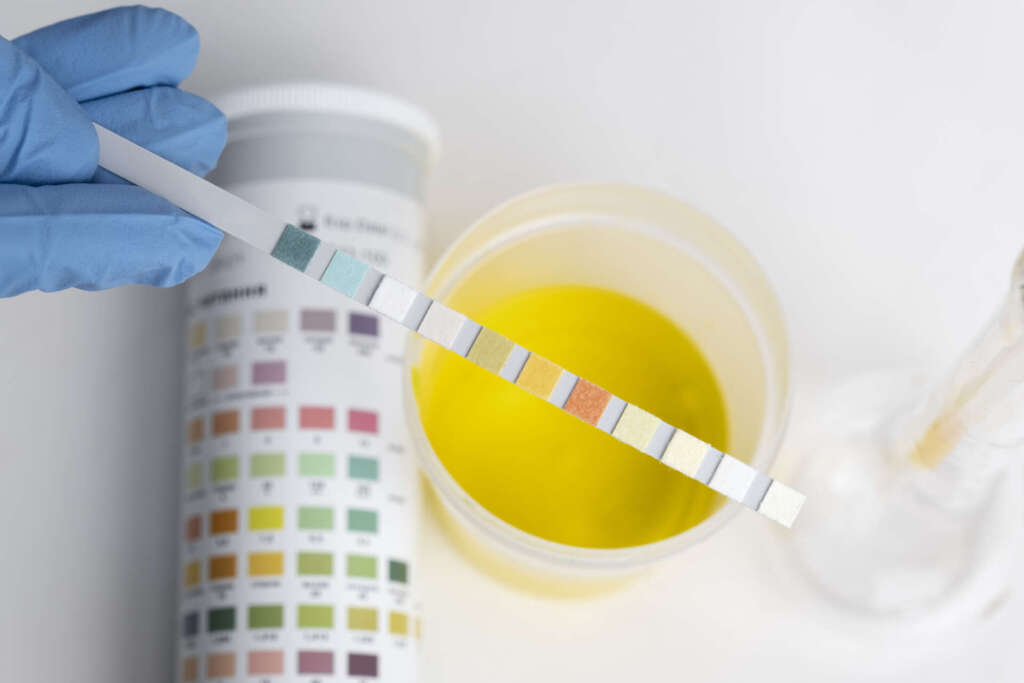
Diagnosing a UTI in men involves a urine culture where a sample of urine is sent to a lab to identify the bacteria causing the infection. However, because UTI symptoms can mimic other conditions—like prostatitis (prostate inflammation), epididymitis or in rare cases bladder or kidney cancer—your doctor may do additional tests to rule out these possibilities.
Collecting a Urine Sample: Tips
- Use a sterile container for your urine sample.
- Before collecting, wash your urethra (pee hole) with water to avoid contamination.
- Collect the mid-stream urine. Start peeing, collect the middle portion in the container and finish peeing into the toilet.
Treatment for Male UTI
Treating male UTIs usually involves antibiotics which target and kill the bacteria causing the infection. The type and length of antibiotic treatment depends on the severity of the infection.
Some things to remember:
- Finish the entire course of antibiotics even if you feel better after a couple of days. Stopping early can lead to antibiotic resistance.
- If you’re in pain, over-the-counter pain meds can help.
- Drink plenty of fluids to help the antibiotics flush out the bacteria.
Ways to Prevent UTIs
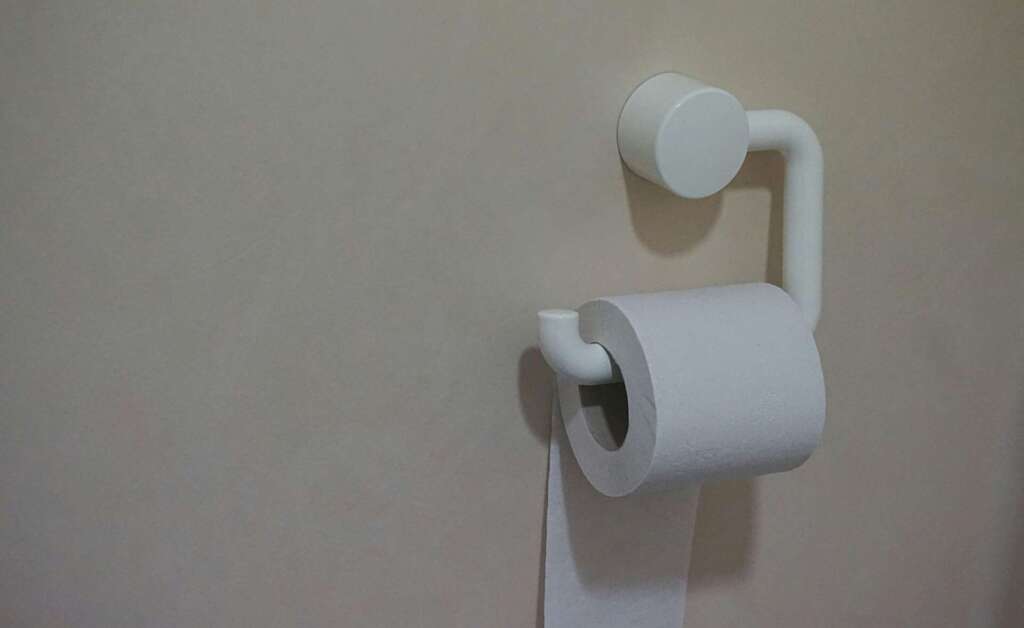
Ann’s Top Tips
You can take these simple steps to help prevent UTIs:
- Good toilet hygiene: After using the bathroom wipe from front to back to avoid spreading bacteria to your urethra.
- Don’t hold your pee: Urinating regularly flushes bacteria out of your system.
- Pee after sex: This simple act washes away bacteria that may have migrated near the urethra.
- Stay hydrated: Drink 6-8 glasses of water a day. Water helps you pee more frequently which clears bacteria from the urinary tract.
- Gentle cleaning: Avoid using harsh soaps or sprays around your genital area. Water is usually enough to keep things clean.
Patient Story: John’s UTI Battle
John, 55 came to see me in the clinic with urinary symptoms. He had never had urinary issues before but over the past week he had been getting a burning sensation while urinating. At first he thought it was due to dehydration as he had been outside a lot in the heat without drinking enough water. But his symptoms got worse. He was urinating frequently but only passing small amounts. He had pressure in his lower abdomen and lower back pain which was bad enough to wake him up at night.
Initial Consultation and Evaluation
John described his symptoms clearly during our consultation. He was worried as he had always been healthy and had no history of UTIs. I analyzed his medical history, did a physical examination to assess his overall health and ordered a urinalysis, a simple test to check for signs of infection in his urine.
Given his age I was also mindful of the possibility of an enlarged prostate which can cause urinary symptoms in men. To rule this out I did a digital rectal exam to check the size and condition of his prostate which was normal with no signs of enlargement or tenderness.
Diagnostic Findings
The urinalysis showed that John had a urinary tract infection. The test showed a lot of white blood cells indicating inflammation and bacteria. Further testing showed Escherichia coli (E. coli bacteria) as the causative organism – this is the most common cause of UTIs even in men. I ordered a urine culture to make sure we were using the right antibiotic but started treatment based on the typical bacterial profile.
Although John had no recent sexual activity which is another risk factor for UTIs in men, his symptoms and test results were consistent with an uncomplicated urinary infection. There was no signs of more serious conditions like kidney involvement or prostatitis (inflammation of the prostate) which was good.
Treatment Plan
I prescribed John 10 days of nitrofurantoin, an antibiotic commonly used to treat UTIs in men. I told him to take the medication as directed and to finish the entire course even if his symptoms improved earlier.
I also told John to increase his fluid intake to flush out the bacteria from his urinary system. He was also advised to avoid irritants like caffeine, alcohol and spicy food which can irritate the bladder while the infection is healing.
Follow-up and Recovery
A few days after starting antibiotics John called the office to report that his symptoms were improving. The burning was almost gone and he wasn’t urinating as frequently. But the lower back pain took a few more days to subside.
At his follow up appointment after finishing the antibiotic John felt back to normal. A repeat urinalysis showed that the infection was clear. I used this opportunity to talk to him about prevention. I told him that while UTIs are less common in men they can become more frequent with age especially if prostate enlargement or other factors come into play. To reduce the risk of future infections I advised him to:
- Stay hydrated especially during times of increased physical activity or heat exposure.
- Urinate regularly and don’t hold in urine for a long time.
- Practice good hygiene.
- Schedule regular check-ups to monitor his prostate health especially if he experiences similar symptoms again.
Conclusion
John’s case is a reminder to always be aware of UTIs in men especially those above 50. UTIs in men are more complex than in women and although his was uncomplicated we always have to consider and rule out prostate involvement or obstruction in the urinary tract. John’s recognition of his symptoms and willingness to seek medical attention allowed us to treat the infection before it becomes more serious like kidney infection or prostatitis.
How Long Does a Male UTI Last?
Once you start antibiotics you should feel better within a day or two. If your symptoms persist after starting treatment, see your doctor.
Best Drinks for a UTI

When you have a UTI hydration is your BFF. Drinking cranberry juice (unsweetened), water or low sugar electrolyte drinks may help prevent bacteria from sticking to the walls of your urinary tract. You do not need juices – water usually works just as well!
Why drink cranberry juice?
Cranberry juice has been touted as a home remedy for preventing and managing urinary tract infections (UTIs) for ages. The magic in cranberries lies in compounds called proanthocyanidins which prevent bacteria, especially E. coli from adhering to the walls of the urinary tract thus reducing the chances of infection.
While drinking cranberry juice may help lower the risk of recurrent UTIs in some people, it’s not a cure and the research is mixed. Most studies say cranberry products offer mild prevention benefits but not for an active infection. When you have a active UTI then water is just as useful usually!!
To get the most benefits drink unsweetened cranberry juice or take cranberry supplements as sugary drinks can sometimes encourage bacterial growth. For active UTIs antibiotics are the most effective treatment and cranberry juice should only be used as a supplement to support urinary health.
Can You Treat a UTI at Home Without Antibiotics?
While it’s tempting to try home remedies, most UTIs in men require antibiotics. Ignoring treatment can lead to serious complications like kidney infections or rarely sepsis. If you’re worried about antibiotics talk to your doctor—they may suggest lifestyle changes to prevent future infections but treatment is usually necessary.
Why Men Get Fewer UTIs Than Women
Men get fewer UTIs than women because of anatomy. Women have a shorter urethra so bacteria have a shorter distance to travel to reach the bladder. Men have a longer urethra so bacteria have more obstacles to overcome before causing an infection.
Recurrent Urinary Tract Infection
Recurrent urinary tract infections happen when you get multiple UTIs in a short period of time, usually defined as two or more in six months or three or more in a year. Recurrent urinary tract infections are more common in women due to anatomy but men can get them too especially if they have underlying health issues like an enlarged prostate or kidney stones. Causes of recurring UTIs may be incomplete treatment of previous infections, frequent sex or anatomical abnormalities that allow bacteria to re-enter the urinary tract. People with diabetes or those who use catheters are more prone. Prevention measures like staying hydrated, good hygiene, urinating after sex and in some cases low dose antibiotics can help reduce frequency of infections. If UTIs keep coming back a doctor may recommend further tests to check for structural problems in the urinary tract.
UTI vs Bladder Infection: What’s the Difference?
A UTI (urinary tract infection) is an infection that can happen anywhere along the urinary system, including the urethra, bladder, ureters or kidneys. A bladder infection, also known as cystitis, is a type of UTI that only affects the bladder.
While all bladder infections are UTIs, not all UTIs are just bladder infections. The symptoms can be the same, pain or burning during urination, frequent urges to pee and cloudy or bloody urine. But a UTI can spread beyond the bladder to other parts of the urinary tract and become more serious like a kidney infection. In both cases antibiotics are usually needed, but a bladder infection is generally less serious than a UTI that has spread.
UTI vs Kidney Infection: What’s the Difference?
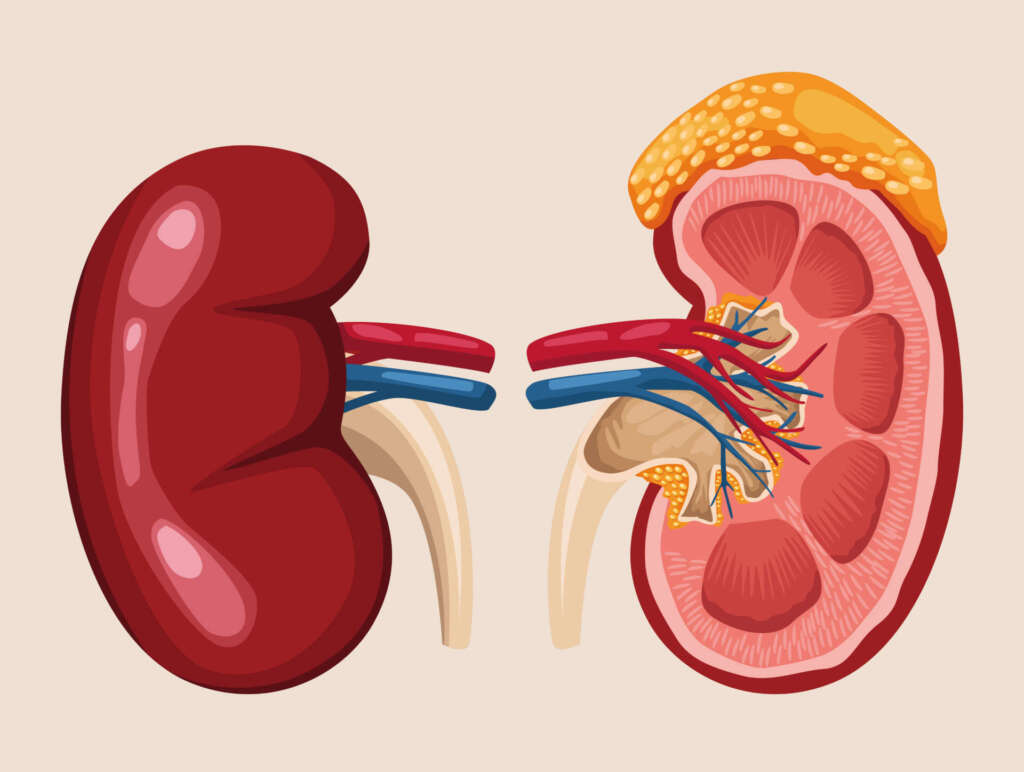
A UTI and a kidney infection are related but occur in different parts of the urinary tract and are different levels of severity. A UTI starts in the lower urinary tract, usually the bladder (cystitis) or urethra, and causes symptoms like burning during urination, frequent pee urges and cloudy urine. But if the infection travels up and reaches the kidneys, it’s a kidney infection (pyelonephritis) which is more serious.
Kidney infections have more intense symptoms like high fever, chills, back or side pain and nausea and can cause kidney damage or sepsis if left untreated. Both are treated with antibiotics but kidney infections need more urgent medical attention and possibly hospitalization to prevent further complications.
Summary
A UTI is not to be taken lightly. Whether you have symptoms or want to prevent an infection here’s what you need to remember:
- Don’t wait to see a doctor if you have UTI symptoms.
- If you’re prescribed antibiotics finish the entire course even if you feel better.
- Take preventive measures like drinking water regularly, good hygiene and urinating after sex.
Being proactive with your urinary health can help you avoid future infections and more serious complications.
References:
https://www.nhs.uk/conditions/urinary-tract-infections-utis/
https://www.nhsinform.scot/illnesses-and-conditions/kidneys-bladder-and-prostate/urinary-tract-infection-uti/
https://www.cdc.gov/hai/ca_uti/uti.html
Disclaimer: The Content on this channel is for educational purposes and not intended to be a substitute for professional medical advice, diagnosis, or treatment. Always get advice from your Doctor if you are worried or have symptoms.
